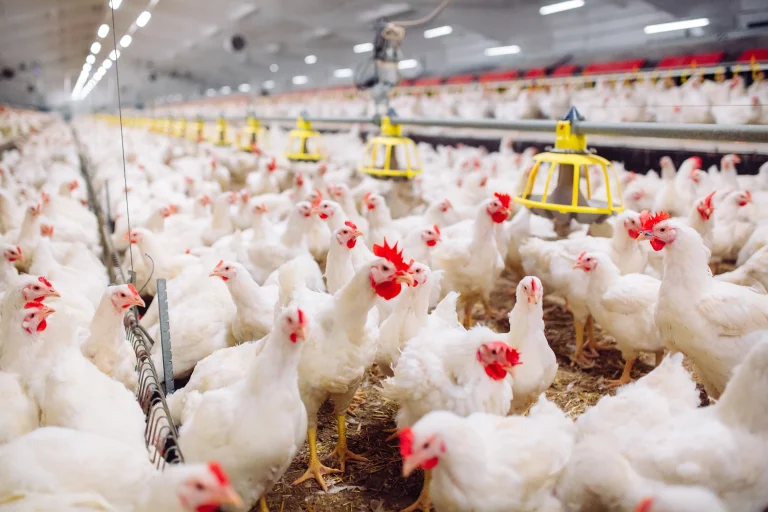The broiler chicken farming in Uganda model is one of the fastest-growing agribusiness ventures for young farmers. With birds reaching maturity in six to eight weeks and consistent demand for chicken meat, broilers can generate quick and steady income. This guide outlines the key steps to start, manage, and succeed in broiler production.
1. Plan Your Investment
Success begins with proper budgeting. A day-old chick costs about Shs3,000–3,500. Moreover, each broiler consumes about 5.5 kg of feed to reach 2 kg market weight. A 50 kg bag of finisher feed costs roughly Shs145,000. Therefore, for 100 birds, budget about Shs3.5 million to cover chicks, feed, housing, vaccinations, utilities, and labour. In addition, always allow for a 3–6% mortality rate to avoid surprises.
2. Build Proper Housing
Housing plays a vital role in poultry farming. A simple house for 100 birds may cost around Shs1.5 million. In addition, feeders and drinkers could add Shs150,000. Before chicks arrive, clean and disinfect the structure thoroughly. Furthermore, install a footbath with disinfectant at the entrance to stop disease from entering. Proper housing not only reduces stress but also prevents costly disease outbreaks.
3. Focus on Feeding and Health
Feed management determines the success of the flock. For example, provide starter feed during the first three weeks, then switch to grower and finisher feeds until market time. Each bird should reach 2 kg by six to eight weeks. In addition, ensure vaccinations against common poultry diseases. Moreover, check the birds daily for any unusual signs. By combining good feeding with biosecurity, farmers can achieve high survival rates and faster growth.
4. Manage Operational Costs
Profitability depends on accurate cost control. Utilities like water, electricity, and disinfectants can exceed Shs100,000 for 100 birds. If you hire a casual worker, add Shs200,000 for labour each month. Therefore, record every cost in detail. This helps identify waste and makes it easier to improve results in the next cycle.
5. Plan for Marketing Early
Marketing should start before the birds reach market weight. For example, identify restaurants, supermarkets, or local consumers in advance. Farm-gate sales often deliver the highest prices at about Shs11,500 per kilo. However, selling through middlemen guarantees larger volumes, even though the price may be lower. By planning early, farmers ensure cash flow as soon as the birds are ready.
6. Calculate Returns
With proper planning, returns come quickly. For 100 birds, expect to sell about 94–97 after accounting for losses. At Shs23,000 per bird, revenue exceeds Shs2.1 million. While the first cycle may not fully repay housing costs, operational investments are usually recovered after two or three rounds. As a result, within three to six months, the farm can start generating consistent profits.
7. Build Climate Resilience
Modern broiler farming also supports climate-smart agriculture. Improved breeds resist heat stress and disease more effectively. In addition, researchers at MuZARDI are developing new breeds that grow faster and require less water. Farmers can also reduce costs by adopting sustainable feeds. For example, Azolla, a water-efficient protein-rich plant, offers a strong alternative to maize-based diets. These practices not only improve profits but also strengthen resilience to climate change.
The broiler chicken farming in Uganda model provides a reliable path to income for both beginners and experienced farmers. With careful planning, proper housing, efficient feeding, and early marketing, farmers can recover investments quickly. Moreover, the short production cycle ensures fast returns, while climate-smart methods add long-term sustainability. In conclusion, broilers are a gateway to profitable and resilient agribusiness in Uganda.

